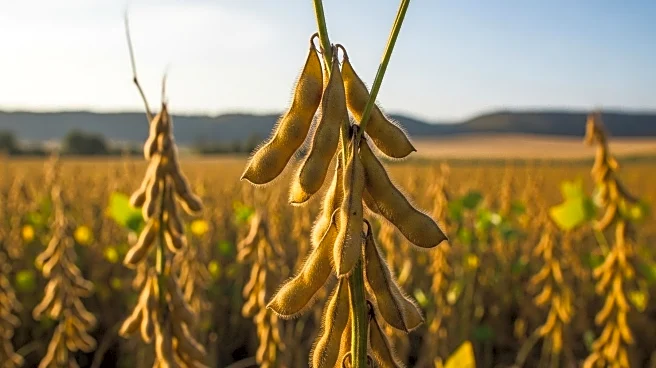What's Happening?
Farmers have been navigating fluctuating corn and soybean prices over the past two years, with significant lessons emerging from these trends. In 2024, corn prices peaked in May and dropped into August, while in 2025, they peaked in February and declined similarly. Soybean prices followed a comparable pattern, peaking in January 2024 and February 2025, with subsequent declines. The recommendation for farmers has been to sell new-crop corn, soybeans, and wheat between April and June, using hedges, forward contracts, and puts to protect against price volatility. This strategy has been crucial in managing risks and ensuring profitability despite challenging market conditions.
Why It's Important?
The insights gained from these price trends are vital for farmers aiming to maximize profits and minimize risks. By understanding the timing of price peaks and troughs, farmers can make informed decisions about when to sell their crops. This knowledge is particularly important in a market characterized by narrow trading ranges and limited opportunities for profitable sales. The ability to anticipate market movements and secure favorable prices can significantly impact farmers' financial stability and long-term sustainability. Additionally, these strategies help farmers navigate the complexities of crop insurance guarantees and market fluctuations, ensuring they remain competitive in the agricultural sector.
What's Next?
Looking ahead to 2026, farmers are advised to continue monitoring market trends and adjust their strategies accordingly. The expectation is that market patterns may differ, potentially influenced by growing conditions in North and South America. Farmers are encouraged to make cash sales and establish new-crop hedges between April and June, with a focus on using puts to guarantee minimum prices. This approach will help farmers manage risks and adapt to changing market conditions, ensuring they remain resilient in the face of potential challenges.











